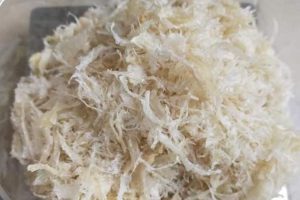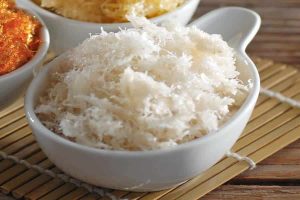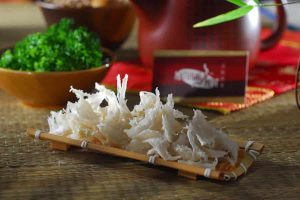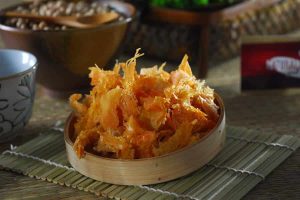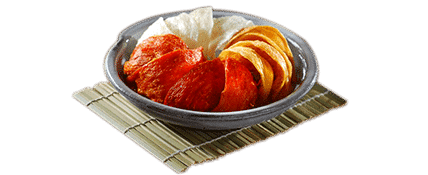Due to the high economic value of EBN, swiftlets are being reared extensively in man- made houses in Indonesia, Malaysia and Thailand to increase the production of EBN. In recent years, the price of EBN increased drastically due to high consumer demand. This has led to EBN producers and the Malaysian government to’ make efforts for increasing the production of EBN through conservation and house farming. In several areas, the conservation of resources has been aided by the domestication of swiftlet species in bird houses.
House farming of swiftlets in Indonesia began in the 18005, and the industry has considerably developed since then. EBN is cultivated by cross fostering, where the eggs of the white bellied swiftlets are replaced with the eggs of EBN producing swiftlets, thus establishing a new population of EBN producing swiftlets. While populations of the cave EBN swiflets have been declining due to over exploitation of their nests, rapidly growing house farming of the EBN swiftlets has given them a sigh of relief.
The Government of Malaysia under the Ministry of Science, Technology and Innovation (MOSTI, formerly known as Ministry of Science, Technology and Environment) together with the Wild Life Department of Malaysia (PERHILITAN) have recently begun encouraging the general public to venture into the very lucrative EBN industry.
Over the years, a lot of conservation workshops and laws have been implemented in EBN producing countries to raise the production of EBN. However, the research on the house-collected EBN is scarce as the previously researched samples have been mostly obtained from the caves in Indonesia.
Bird Premise or Bird Nest Ranching
The most interesting thing about these swiftlets are their nests. They construct nests with glutinous strands of starch-like saliva produced by a pair of large, salivary glands and thereafter mate and breed their young ones.
It is the nest material that gives them an upper hand over the rest of the birds nest in the world. The nest looks like a cupped hand or a crescent shaped bowl about 3-5 inches in diameter. The flat side is stuck to a wall (a cave wall in wild nest, or a wooden base in cultivated/house nest) and other side of the nest is a place for them to perch, and within the hollow of the nest are either their eggs or their chicks.
The EBN industry is a multi-million dollar enterprise from production, sorting, and cleaning to domestic and international trade. According to a survey in December 2001, approximately 1000 buildings/houses cultivating EBN in Malaysia were reported. The houses produced not less than 10 tons per year (cultivated white bird nest/house nest) while the world demand is 200 tons per year. The demand is still growing but the supply is only able to fulfill half of the demand, which kept the price ever increasing.
Basically, a bird house is a building with artificially created conditions similar to a swiftlet dwelling cave. It is able to attract swiftlets so that they live and breed in it.
In designing a bird house, care should be taken of physical and behavioral needs of birds, human treatment and animal management, human safety, and government rules and regulations.
Physical and Behavioral Needs of Birds
Most of the bird farmers concentrate only on the bird house construction for attracting birds into the houses. This is by far the most important factor in controlling or affecting the bird population in the house. However, it would be better to give consideration to other factors as well prior to the selection of the bird house location. These factors include the swiftlet’s flight path, its population at the specific area, nearest source for food and water and environment assets.
The most important factor is whether the selected area has the particular specie of birds as part of ecosystem. If the area has any of the birds flying through, it would be good. However, if the selected area is quite far away from the bird’s habitat area, it may not be a good choice. Furthermore, the birds can be attracted to the bird house by using a special bird recording sound.
After a particular area is selected, surrounding factors also need a serious consideration. It is also important to find out if the environmental factors in the area under consideration are not supporting. If there is any factory or industry producing heavy toxic materials, smoke or even noise, it is better to avoid that area. Besides, it is quite beneficial to have the presence of supporting factors such as river, pond, forest reserve and open field nearby the selected area.
Human Treatment and Animal Management
Once the selection of the location is made, it is important to plan a bird house or convert a shop house into bird farming premises (bird house). At this stage, human treatment and animal management concerns are very crucial.
The information on building bird houses can be obtained through farming magazines, newspaper advertisements or bird farming association. Expert services are available which can provide guidance in building or converting the shop lot into bird house.
The expert credentials are being emphasized when the potential clients are shown a previously constructed successful bird house producing adequate amount of nests. However, most of the experts’ advice on account of their experiences without concrete finding, studies or research. The behavior of birds is scarcely studied as there are only a few publications on the bird’s behavior.
There are no records on how many birds were to return their house if they were to hatch. Also no data are available on how many times these birds fly back to their nest daily. Besides, the factor of importance is the bird’s willingness to stay back into the origin house or chose a new house for their nest building. However, people have been successfully attracting birds into a house and harvesting bird nest.
Human beings must always treat birds as their companions without staying too close to them. Birds must be given privacy, secured environment and enough comfort to nest their next generation. Environmental guidelines should be followed while applying pesticides and treating the waste of birds. Besides, a great deal of efforts is often required in maintaining the integrity of the nests.
One of the most serious risks associated with bird’s life in the bird house is the theft of their nests. The thief breaks into the bird house and harvest the nests on behalf of the owners. It is a very cruel and off human act to steal nests from the house, as the thief never considers the life of the chicks and eggs in the nest and just drops them on the floor, making this helpless creature to die slowly and with a great deal of torture. Therefore, the bird house owners must consider the security structure and system to secure their wealth and also their wealth creating partners, the swiftlets.
Human Safety and Government Rules and Regulation
There has never been so much emphasis on human safety during nest cultivation. This has totally been a neglected fact in the pursuit for maximum profit. Although surveillance test conducted by the Department of Veterinary Services from the year 2000 have shown negative results for Newcastle Disease, Avian Influenza or Bird Flu H5N1, there is still risk of getting this viruses.
There is a misconception that these birds do not share the same water source with other birds or animals. In reality, they take water from ponds and rivers by flying low on the water surface and occasionally scoping up a sip of liquid. This is particularly true during hot weather and after a long draught. Therefore, it would be wise to take precautions while making entry and exit from the bird house by putting up safety devices to ensure such viruses and other pesticide do not enter or exit from the bird house. There should be contingency plans in the event of an outbreak to segregate people from the birds. However, till now, there is yet to find any example of this setup in any of the bird houses in Malaysia, Thailand, or Indonesia or anywhere else in the world.
The Malaysian government has not given any clear guidelines as to the setting-up of bird houses in Malaysia. Therefore, commercial shop houses have been converted into bird houses with people running restaurants downstairs. Some of the bird house have residents who live there to safeguard their asset. The establishment of bird houses in a residential area might have associated health risks. There are no guidelines and regulations available whether or not bird farming can be done in housing are or in the middle of the town centre. Care needs to be taken of the children who are sick and coughing when such premises are built around your area. However, the only guideline published by one of the government agencies has discussed noise pollution and the ugly structure leaving the township, an eyesore.
Swiftlets Eco Park by Bio Research Centre is the one particular development where specific areas and premises were selected to build and farm swiftlets. It is the first and the only one in Malaysia which the government has approved so far. This is an opportunity for all the potential bird farmers to buy one of these premises and start cultivating bird’s nests without worrying about the rules and regulations and other annoying factors.
Economic Factors of a Bird House
To go into the nest business, choose a good location, build a house, install all necessary facilities to attract birds and start harvesting. All these processes need an investment ranging from RM 300,000-RM 500,000 depending on the location and size of the building. This investment will generate a good and progressive income over the years, while the owner maintains his full time job. This business can be done by everyone. Suppose by having a harvest of 110 to 130 nests that make up to l kg of the market price of RM 4,000-RM 6,000 every month after one or two years. The investment will increase by 30 to 100% where most of the cases are. That is why this is the business of what everyone is talking about.
The funny part in the whole business is how to grade a raw bird nest. Normally, all the bird farmers sell to a middle man by evaluation through experience and making further negotiations on the price. They evaluate the size, color, impurity (bird’s feather) and shape (strait or angle), but have little concern on moisture, integrity, pesticide or heavy metal content. This is extremely unacceptable as bird nest is considered as a tonic and most of the time it is consumed by elderly, youth and expecting mothers.
Future Development of a Bird House
Future development of bird houses depends upon the government moves. It is certain that this industry will not stop here. It is expected to continue its growth due to the lucrative returns. However, more stringent rules and regulations must be installed to reduce or nullify the degree of hazards brought about by this industry. Also, adding a system of taxation into this multi-million industry will be a positive move. The newly licensed bird houses will be in great demand due to two reasons. One of the reasons is that the shop houses converted into bird houses are off welcoming by the public, and the other is the stress of the fear that government may start demolishing the previously established shop houses sometime in the future.



